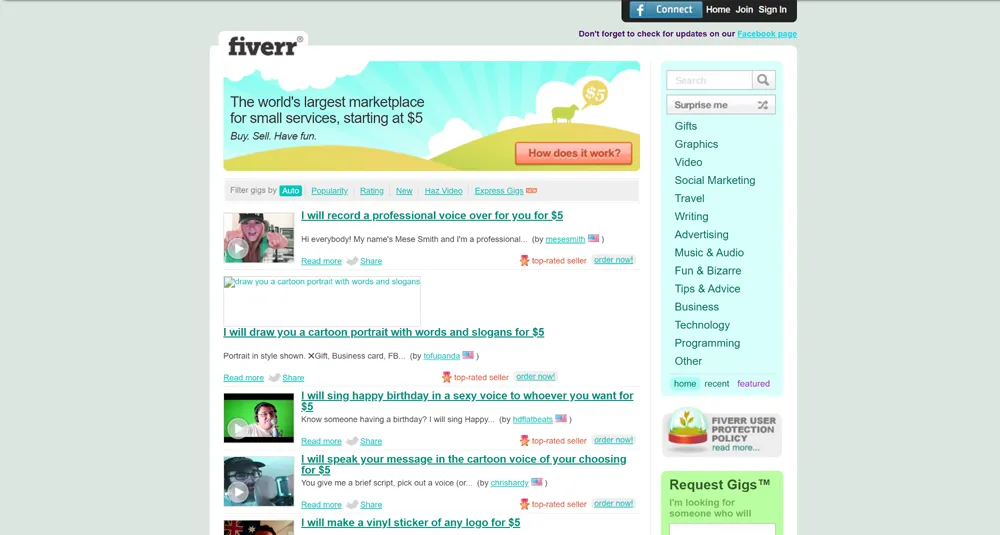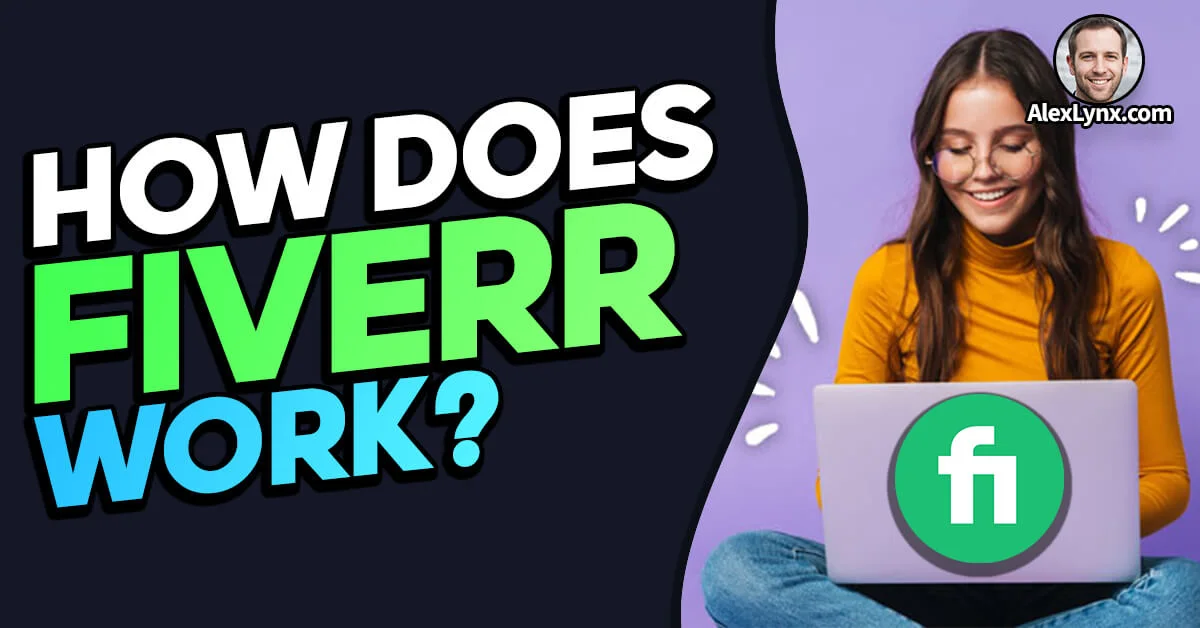If you've ever needed a quick design, writing, or programming task done, chances are you've stumbled upon Fiverr. This platform revolutionized the way freelancers offer their services and businesses find talent. But have you ever wondered when it all began? In this post, we'll take a journey back to the inception of Fiverr, exploring its founding moments and the vision behind this popular marketplace. Let's dive into the story of how Fiverr came to be!
The Founding of Fiverr

The story of Fiverr's inception is as intriguing as it is inspirational. Founded in 2010 by Micha Kaufman and Shai Wininger, this innovative platform aimed to create an online marketplace that bridged the gap between freelancers looking for work and clients seeking affordable services. The name "Fiverr" stems from the platform's original goal: offering a variety of services starting at just $5.
Let’s break down some key elements of Fiverr's founding:
- Vision: Kaufman and Wininger wanted to create a streamlined process for both freelancers and buyers. They aimed for ease of use, affordability, and access to a diverse skill set.
- Launch: Fiverr officially launched in February 2010. The concept quickly gained traction, attracting both freelancers eager to showcase their talents and clients in need of quick, cost-effective solutions.
- Initial Offerings: The platform started with basic gigs across various categories, including graphic design, writing, and digital services. The $5 price point made it easy for buyers to take a chance on new talent.
- Growth Strategy: Fiverr leveraged social media and word-of-mouth to build its user base. As more people joined, the offerings expanded, and so did the price points.
Today, Fiverr is a thriving marketplace, but it all started with a simple idea: making freelance work accessible to everyone. The combination of affordability and convenience laid the groundwork for its rapid success and evolution. What began as a platform for simple gigs has transformed into a comprehensive ecosystem where freelancers can showcase their expertise at various price levels, reaching a global audience.
Also Read This: How Many Percent Does Fiverr Take? Understanding Fiverr’s Fees
Fiverr's Initial Launch and Goals

Fiverr officially launched in February 2010, and it was a remarkable time for freelancers and businesses alike. The platform was designed with a straightforward model that allowed users to buy and sell services, or "gigs," starting at just $5. What an exciting concept! The founders, Micha Kaufman and Shai Wininger, had a vision to create a space where anyone could monetize their skills easily.
The initial goals of Fiverr were clear and ambitious:
- Accessibility: They wanted to make freelancing accessible to everyone, regardless of location or budget.
- Variety of Services: By allowing users to offer a range of services—from graphic design to writing and programming—Fiverr aimed to cater to a diverse clientele.
- Community Building: They sought to create a vibrant community of freelancers and buyers who could connect in a seamless environment.
Right from the start, the Fiverr platform featured a user-friendly interface that made purchasing gigs effortless. The innovative rating system encouraged sellers to provide high-quality services, while buyers had the opportunity to work with top-notch talent from around the globe. This model not only empowered freelancers but also changed the way businesses could find affordable solutions to their needs.
Also Read This: How to Create Free Fiverr Coupon Codes
Growth and Development Over the Years

From its humble beginnings, Fiverr experienced remarkable growth and development over the years. What started as a simple platform with limited gigs transformed into a bustling marketplace boasting millions of services. By 2012, just two years after its launch, Fiverr reported over 1 million transactions. Can you believe that?
As the platform evolved, Fiverr introduced several key features to enhance user experience:
- Different Price Points: Initially focused on $5 gigs, Fiverr expanded to allow sellers to offer services at multiple price levels, catering to different budgets and needs.
- Improved Seller Tools: Fiverr rolled out extensive tools for sellers, including analytics, promotion options, and educational resources to help improve their skills and grow their businesses.
- Mobile App Launch: In 2014, Fiverr launched its mobile application, allowing users to access the marketplace anytime, anywhere, making freelancing even more convenient.
The company continually adapts its offerings, responding to market demands and enhancing functionality. With features like Buyer Requests and advanced search options, Fiverr has solidified its position as a go-to platform in the gig economy. As of 2023, Fiverr boasts millions of active users, proving that its innovative model and continuous development have been a true game changer.
Also Read This: Charges by Freelance Photographers
Fiverr's Impact on the Freelance Market

Fiverr has undeniably transformed the landscape of the freelance market since its inception. By creating a platform where anyone can offer their skills and services, it has democratized the freelancing space. No longer are freelancers confined to traditional job-seeking methods; they can now showcase their expertise directly to a vast audience.
One of the significant impacts of Fiverr is the expansion of freelance opportunities. Before Fiverr, many skilled individuals struggled to find clients. Now, they have the chance to showcase their talents, whether it's graphic design, writing, marketing, or programming. This accessibility allows freelancers to connect with clients worldwide, breaking geographical barriers and opening doors to global employment.
Another noteworthy effect is the shift in how businesses operate. Companies, both large and small, now have an easier time tapping into freelance talent. Instead of hiring full-time employees, they can source services on-demand through Fiverr, allowing for greater flexibility and cost-effectiveness. This shift has led to the rise of the gig economy, where businesses and individuals alike can benefit from a la carte service offerings.
Moreover, Fiverr has fostered a culture of entrepreneurship among freelancers. Many have turned their side hustles into full-fledged businesses, empowered by the platform’s easy-to-use interface and wide reach. In essence, Fiverr isn’t just a marketplace; it’s a launchpad for many creative careers.
Also Read This: How to Invite Others to Fiverr: A Step-by-Step Guide
Key Milestones in Fiverr's Journey
Since its launch in 2010, Fiverr has experienced several key milestones that have shaped its growth and success. Let’s take a stroll down memory lane and highlight some pivotal moments:
| Year | Milestone |
|---|---|
| 2010 | Fiverr is founded by Micha Kaufman and Shai Wininger, introducing the $5 service model. |
| 2012 | Fiverr raises $15 million in Series A funding, allowing for platform enhancements and marketing. |
| 2014 | The launch of Fiverr Pro, targeting higher-end clients and professional freelancers. |
| 2017 | Fiverr expands its service offerings by introducing new categories and features, catering to evolving market demands. |
| 2020 | Fiverr goes public, marking a significant milestone by trading on the New York Stock Exchange. |
These milestones reflect Fiverr's evolving vision to not only serve as a freelance marketplace but also to innovate continuously, adapting to the needs of freelancers and clients alike. As Fiverr continues to grow, we can only expect more exciting developments in the future!
Also Read This: Best Fiverr Sellers for Quality Services in 2024
When Did Fiverr Start? A Look Back at Its Inception
Fiverr, a pioneering online marketplace for freelance services, was founded in February 2010 by Micha Kaufman and Shai Wininger. The platform was established with the goal of providing a space for freelancers to offer their services and for clients to access a diverse array of skills at affordable prices. Here's a closer look at the inception of Fiverr and its early milestones:
Key Milestones in Fiverr's Early Days
- 2010: Fiverr launches with the vision of creating a global marketplace allowing users to buy and sell services starting at just $5.
- 2011: The platform gained rapid traction, amassing 1 million gigs sold within its first year. This exponential growth showcased the increasing demand for freelance services.
- 2012: Fiverr introduced various features such as gig extras that allowed freelancers to offer add-ons to their services, further enhancing the user experience.
- 2013: The platform secured $15 million in funding, enabling further expansion and marketing efforts.
- 2014: Fiverr launched mobile applications, making it easier for users to access the platform from anywhere.
Fiverr's Business Model
Fiverr's unique business model connects freelancers offering services (also known as "gigs") to customers looking for various skills, ranging from writing and graphic design to programming and video editing. Here are some key attributes:
| Description | Details |
|---|---|
| Starting Price | Gigs start at $5 but can vary based on complexity and freelancer expertise. |
| Service Categories | Includes writing, design, programming, marketing, and more. |
| Payment Model | Fiverr takes a commission from each gig sold, ensuring a sustainable revenue stream. |
Overall, Fiverr's inception marked the beginning of a transformative era in the freelance economy, connecting talent with opportunity on a global scale.
Conclusion: The Future of Fiverr
As Fiverr continues to evolve, its adaptability and innovation suggest a promising future, expanding its services and enhancing user experiences while playing a pivotal role in the gig economy.



